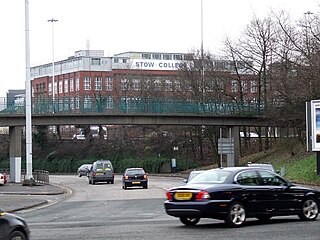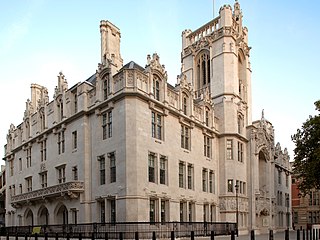Macaura v Northern Assurance Co Ltd [1925] AC 619 appeared before the House of Lords concerning the principle of lifting the corporate veil. Unusually, the request to do so was in this case made by the corporation's owner.
Macaura v Northern Assurance Co Ltd [1925] AC 619 appeared before the House of Lords concerning the principle of lifting the corporate veil. Unusually, the request to do so was in this case made by the corporation's owner.
Mr Macaura owned the Killymoon estate in County Tyrone, Northern Ireland. He sold the timber there to Irish Canadian Sawmills Ltd for 42,000 fully paid up £1 shares, making him the whole owner (with nominees). Mr Macaura was also an unsecured creditor for £19,000. He got insurance policies - but in his own name, not the company's - with Northern Assurance covering for fire. Two weeks later, there was a fire. Northern Assurance refused to pay up because the timber was owned by the company, and that because the company was a separate legal entity, it did not need to pay Mr Macaura any money.
The House of Lords held insurers were not liable on the contract, since the timber that perished in the fire did not belong to Mr Macaura, who held the insurance policy. Lord Buckmaster gave the first judgment, holding in favour of the insurance companies. Lord Atkinson concurred. Lord Sumner concurred and said the following. [1]
My Lords, this appeal relates to an insurance on goods against loss by fire. It is clear that the appellant had no insurable interest in the timber described. It was not his. It belonged to the Irish Canadian Sawmills Ltd, of Skibbereen, Co. Cork. He had no lien or security over it and, though it lay on his land by his permission, he had no responsibility to its owner for its safety, nor was it there under any contract that enabled him to hold it for his debt. He owned almost all the shares in the company, and the company owed him a good deal of money, but, neither as creditor nor as shareholder, could he insure the company's assets. The debt was not exposed to fire nor were the shares, and the fact that he was virtually the company's only creditor, while the timber was its only asset, seems to me to make no difference. He stood in no "legal or equitable relation to" the timber at all. He had no "concern in" the subject insured. His relation was to the company, not to its goods, and after the fire he was directly prejudiced by the paucity of the company's assets, not by the fire.
Lord Wrenbury and Phillimore concurred.

Corporate law is the body of law governing the rights, relations, and conduct of persons, companies, organizations and businesses. The term refers to the legal practice of law relating to corporations, or to the theory of corporations. Corporate law often describes the law relating to matters which derive directly from the life-cycle of a corporation. It thus encompasses the formation, funding, governance, and death of a corporation.

Salomon v A Salomon & Co Ltd[1896] UKHL 1, [1897] AC 22 is a landmark UK company law case. The effect of the House of Lords' unanimous ruling was to uphold firmly the doctrine of corporate personality, as set out in the Companies Act 1862, so that creditors of an insolvent company could not sue the company's shareholders for payment of outstanding debts.

Kosmopoulos v Constitution Insurance Co of Canada is a leading Supreme Court of Canada decision on the court's ability to pierce the corporate veil—to impose an interest or liability, that is, upon the shareholders of a company instead of the company itself. It was held that the veil can only be lifted where it would be "just and equitable", specifically to third parties.

Tracing is a legal process, not a remedy, by which a claimant demonstrates what has happened to his/her property, identifies its proceeds and those persons who have handled or received them, and asks the court to award a proprietary remedy in respect of the property, or an asset substituted for the original property or its proceeds. Tracing allows transmission of legal claims from the original assets to either the proceeds of sale of the assets or new substituted assets.

English trust law concerns the protection of assets, usually when they are held by one party for another's benefit. Trusts were a creation of the English law of property and obligations, and share a subsequent history with countries across the Commonwealth and the United States. Trusts developed when claimants in property disputes were dissatisfied with the common law courts and petitioned the King for a just and equitable result. On the King's behalf, the Lord Chancellor developed a parallel justice system in the Court of Chancery, commonly referred as equity. Historically, trusts have mostly been used where people have left money in a will, or created family settlements, charities, or some types of business venture. After the Judicature Act 1873, England's courts of equity and common law were merged, and equitable principles took precedence. Today, trusts play an important role in financial investment, especially in unit trusts and in pension trusts. Although people are generally free to set the terms of trusts in any way they like, there is a growing body of legislation to protect beneficiaries or regulate the trust relationship, including the Trustee Act 1925, Trustee Investments Act 1961, Recognition of Trusts Act 1987, Financial Services and Markets Act 2000, Trustee Act 2000, Pensions Act 1995, Pensions Act 2004 and Charities Act 2011.

Re Spectrum Plus Ltd[2005] UKHL 41 was a UK company law decision of House of Lords that settled a number of outstanding legal issues relating to floating charges and recharacterisation risk under the English common law. However, the House of Lords also discussed the power of the court to make rulings as to the law that were "prospective only" to mitigate potential harshness when issuing a ruling that was different from what the law had previously been understood to be.
Re D’Jan of London Ltd [1994] 1 BCLC 561 is a leading English company law case, concerning a director's duty of care and skill, whose main precedent is now codified under s 174 of the Companies Act 2006. The case was decided under the older Companies Act 1985.

The United Kingdom company law regulates corporations formed under the Companies Act 2006. Also governed by the Insolvency Act 1986, the UK Corporate Governance Code, European Union Directives and court cases, the company is the primary legal vehicle to organise and run business. Tracing their modern history to the late Industrial Revolution, public companies now employ more people and generate more of wealth in the United Kingdom economy than any other form of organisation. The United Kingdom was the first country to draft modern corporation statutes, where through a simple registration procedure any investors could incorporate, limit liability to their commercial creditors in the event of business insolvency, and where management was delegated to a centralised board of directors. An influential model within Europe, the Commonwealth and as an international standard setter, UK law has always given people broad freedom to design the internal company rules, so long as the mandatory minimum rights of investors under its legislation are complied with.

Stone & Rolls Ltd v Moore Stephens[2009] UKHL 39 is a leading case relevant for UK company law and the law on fraud and ex turpi causa non oritur actio. The House of Lords decided by a majority of three to two that where the director and sole shareholder of a closely held private company deceived the auditors with fraud carried out on all creditors, subsequently the creditors of the insolvent company would be barred from suing the auditors for negligence from the shoes of the company. The Lords reasoned that where the company was only identifiable with one person, the fraud of that person would be attributable to the company, and the "company" could not rely on its own illegal fraud when bringing a claim for negligence against any auditors. It was the last case to be argued before the House of Lords.

Re Vandervell Trustees Ltd [1974] EWCA Civ 7 is a leading English trusts law case, concerning resulting trusts.

Scally v Southern Health and Social Services Board [1992] 1 AC 294 is an English contract law case, relevant for pensions and UK labour law, concerning implied terms.

Equitable Life Assurance Society v Hyman [2000] UKHL 39 is an English contract law case, concerning implied terms.
Crossley v Faithful & Gould Holdings Ltd [2004] EWCA Civ 293 is an English contract law case, concerning implied terms.

Woolfson v Strathclyde Regional Council [1978] UKHL 5 is a UK company law case concerning piercing the corporate veil.

Illingworth v Houldsworth [1904] AC 355 is a UK insolvency law case, concerning the taking of a security interest over a company's assets with a floating charge. In the Court of Appeal Romer LJ held that a key to a floating charge, as opposed to a fixed charge was that the company can carry on its business with assets subject to the charge.
The corporate veil in the United Kingdom is a metaphorical reference used in UK company law for the concept that the rights and duties of a corporation are, as a general principle, the responsibility of that company alone. Just as a natural person cannot be held legally accountable for the conduct or obligations of another person, unless they have expressly or implicitly assumed responsibility, guaranteed or indemnified the other person, as a general principle shareholders, directors and employees cannot be bound by the rights and duties of a corporation. This concept has traditionally been likened to a "veil" of separation between the legal entity of a corporation and the real people who invest their money and labor into a company's operations.

Westdeutsche Landesbank Girozentrale v Islington LBC[1996] UKHL 12, [1996] AC 669 is a leading English trusts law case concerning the circumstances under which a resulting trust arises. It held that such a trust must be intended, or must be able to be presumed to have been intended. In the view of the majority of the House of Lords, presumed intention to reflect what is conscionable underlies all resulting and constructive trusts.

Knightsbridge Estates Trust Ltd v Byrne [1940] AC 613 is a UK insolvency law case, concerning the creation of a security interest.

Ayerst v C&K (Construction) Ltd [1976] AC 167 was a decision of the House of Lords relating to revenue law and insolvency law which confirmed that where a company goes into insolvent liquidation it ceases to be the beneficial owner of its assets, and the liquidator holds those assets on a special "statutory trust" for the company's creditors.

Sevilleja v Marex Financial Ltd[2020] UKSC 31 is a judicial decision of the Supreme Court of the United Kingdom relating to company law and the rule against reflective loss.